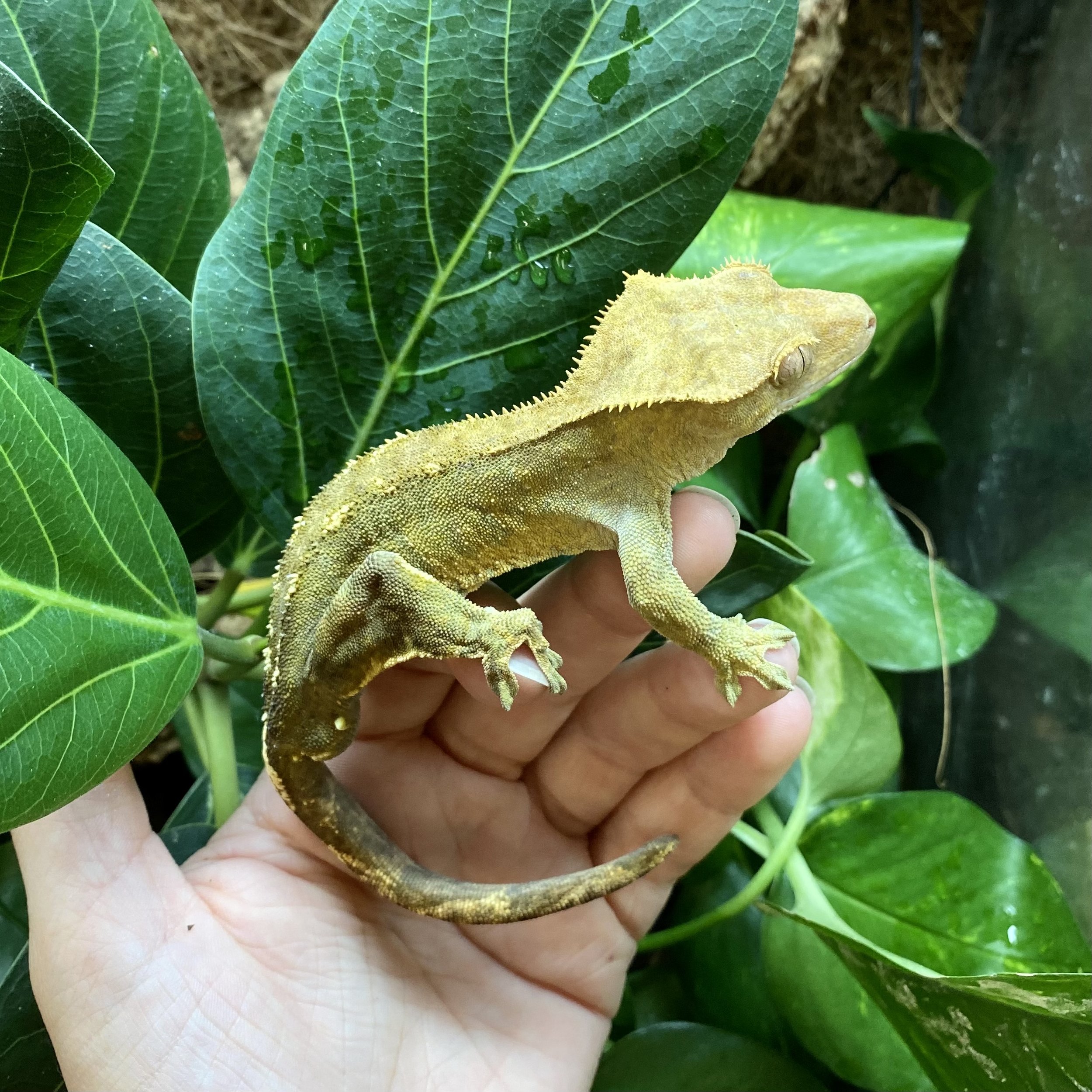
Crested Gecko
Care
Lifespan
15 - 25 years on average.
Adult size
6 - 8 inches including the tail, can reach full size within 18 months.
Housing
A glass front opening tank with appropriate ventilation such as an Exo Terra Terrarium is recommended. As Crested Geckos are arboreal, height is important in an enclosure. Babies and juveniles can be housed in smaller enclosures measuring 30x30x45cm to help establish a healthy appetite.
We recommend older juveniles and adults are upgraded to an enclosure measuring a recommended minimum of 45x45x60cm.
We recommend that the enclosure is filled with branches, foliage and decorations that will promote naturalistic climbing behaviours, as well as providing the gecko with plenty of places to hide and feel secure. It is possible to house baby crested geckos in their adult sized enclosure as long as food is easy for them to find (use multiple feeding stations).
A bioactive setup is also an option, involving live plants and a ‘clean-up crew’ within the soil. For more information about bioactivity, please talk to a member of staff or message one of our Facebook Pages.
Heating
A heat mat can be used on the side of the glass enclosure attached to a Mat stat set at the correct temperature.
Alternatively, for a more accurate hotspot, a Deep Heat Projector can be used within a Heat Dome placed on the top mesh of the enclosure.
We recommend that a dimming thermostat is used to prevent overheating.
Recommended temperatures within the enclosure are: A hotspot of 26c (no hotter than 28c), and an ambient temperature of 20-24c.
Temperatures can drop to 18c at night. We recommend that temperatures are measured using a reliable thermometer.
Lighting
UVB lighting is a beneficial option for this species. Benefits include aiding in the shedding cycle and aiding in the synthesis of calcium, therefore preventing Metabolic Bone Disease. If you choose to provide UVB lighting, an Arcadia Shade Dweller UVB Kit placed on the top mesh of the enclosure is what we recommend. We recommend that lighting is put on a 12 hour light cycle (for example 8am-8pm) to replicate day and night.
Humidity
Crested Geckos require moderate to high humidity levels of 60-80% within the enclosure. This can be achieved by using a humidity retaining soil- based substrate and by spraying the enclosure daily. Conditions should never be kept constantly wet and the substrate should not become waterlogged or soggy. Allow humidity to drop back down to 60% between misting.
Water
We recommend that fresh water is provided daily and cleaned when dirty.
Diet
Crested Geckos in captivity are usually fed a specially formulated complete diet for Crested Geckos alongside Live insects. The specially formulated crested gecko diet (CGD) is purchased in powder form that is mixed with water to achieve a ‘baby food’ or ‘ketchup’ consistency, which is placed inside the enclosure in a small bowl and replaced every 2-3 days.
Size-appropriate live insects can be offered as a great form of enrichment. They can be fed regularly to babies and juveniles to aid in their growth rate but recommend being fed less often to adults. The amount fed should be adjusted based on the body condition and weight of the animal.
Supplementation
Complete Crested Gecko powder diets already contain calcium and multivitamins, so no additional supplements need to be added to them. We do however recommend that live foods are supplemented with a light coating of calcium when fed during weekdays, and multivitamins when fed during weekends.
If your Crested Gecko is provided with UVB lighting, supplements should not contain D3. However, if your Crested Gecko does not have UVB lighting, supplements should contain D3. Correct supplementation is required in order to eliminate the risk of nutritional deficiencies, such as Metabolic Bone Disease.
Handling
Crested Geckos have the ability to drop their tail and once this has happened it will not grow back. This is a method of escape from predators, but can also happen if they are picked up by their tail, restrained, or feeling threatened. Babies tend to be faster and more nervous at first, but with regular gentle handling and interaction, they can become very calm and laid back adults.
